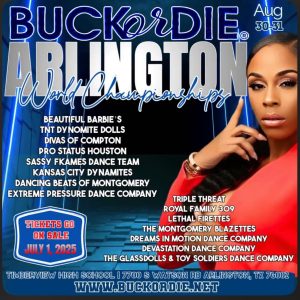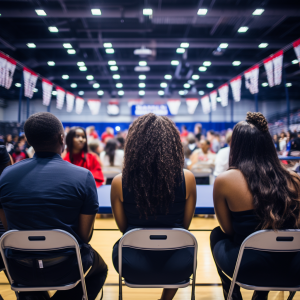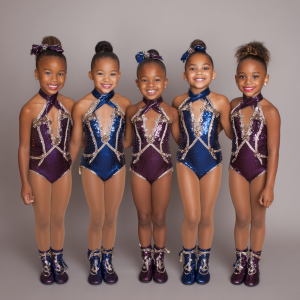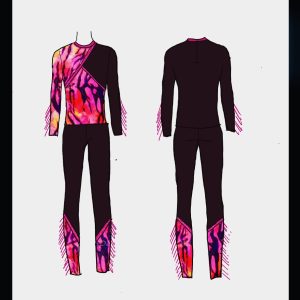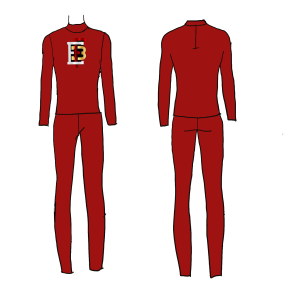With the Trump administration’s 2025 directives tightening federal grant eligibility—especially for programs tied to diversity, equity, and inclusion (DEI)—nonprofits must pivot and diversify their funding strategy in innovative ways.
Despite policy uncertainty—including freeze attempts, agency-level funding pauses, and scrutiny of IRS tax-exempt status—opportunities still exist for community-serving groups that align strategically.
Key Strategic Pillars
Diversify Fundraising Sources
Emphasize a blend of federal grants, foundation support, corporate sponsorships, and grassroots local fundraising.
Target Safe Funding Categories
Focus proposals on public health, youth violence prevention, arts & culture education—topics less vulnerable to DEI-related restrictions.
Deepen Community Alignment
Emphasize civic and health outcomes in grant proposals. Show how the dance team advances obesity prevention, after‑school safety, cultural heritage, and youth empowerment in Black communities.
Develop Flexible Partnerships
Collaborate with schools, health agencies, and local nonprofits to co-apply for multi-sector grants.
Grant Types with Example Paragraphs
1. Public Health & Physical Activity
Grant type: CDC or Department of Health and Human Services funding for youth obesity and physical activity programs via community behavioral health or local health initiatives.
Sample narrative:
“Our majorette dance team operates after school in a predominantly Black neighborhood with high rates of childhood obesity. Through twice‑weekly, structured dance practices focused on aerobic fitness, flexibility, and fun, we engage youth in moderate-to-vigorous physical activity for at least 60 minutes each session. We measure BMI, fitness gains, and participation over six months. Our program meets the grant’s objective of reducing obesity and promoting lifelong physical wellness in underserved youth.”
2. Violence Prevention and Safe Spaces
Grant type: DOJ’s Office of Violence Against Women Children & Youth Program or DOJ/OJP violence prevention discretionary grants for youth ages 0–24
Sample narrative:
“Our dance team serves as a structured, creative after‑school space in a neighborhood impacted by youth violence. From 3–6 pm daily we offer supervised rehearsal, mentorship, conflict-resolution discussions, and peer support. By partnering with local schools and youth services, we reduce students’ exposure to high-risk environments and support social connection. Our initiative aligns with grant goals to prevent violence through community-based programs that actively engage youth.”
3. Safe Schools / Healthy Students (SS/HS)
Grant type: U.S. Dept. of Education / DOJ / HHS collaborative grants that support school safety, social‑emotional learning, mental health, and community arts engagement.
Sample narrative:
“As part of the Safe Schools/Healthy Students framework, our dance team enhances student social and emotional wellness by integrating teamwork, self-esteem building, and expressive arts education within rehearsals. Working in collaboration with school counselors and law enforcement liaison programs, our after-school model addresses behavioral health, peer relationships, and creative engagement—fulfilling the SS/HS aim of strengthening both school climate and community trust.”
4. Arts & Culture Preservation
Grant type: State arts councils or regional arts organizations, or NEA grants for dance/arts projects not tied explicitly to DEI mandates.
Sample narrative:
“Our majorette troupe preserves and celebrates cultural dance traditions rooted in historically Black colleges and urban community performance. We offer free public showcases, youth workshops, and family-facing events that foster intergenerational cultural continuity. By focusing on artistic excellence and heritage transmission rather than DEI messaging, we align with NEA-supported arts education and cultural enrichment priorities.”
5. Private Foundation or Local Corporate Grants
Grant type: Private philanthropic foundations (e.g. local community foundations or health‐focused funds) that support youth arts, mentorship, or violence prevention.
Sample narrative:
“Through a local community health foundation grant, we’ll offer mentorship and performance-based outreach in partnership with neighborhood clinics and schools. By convening workshops on healthy living, teamwork, and arts expression, our dance team not only enhances physical fitness but also offers mentorship for teens vulnerable to street violence. This aligns directly with the foundation’s interest in community-driven health education and youth empowerment.”
Strategy Summary Table
| Funding Stream | Focus Area | Why It Works for Your Team |
|---|---|---|
| Federal Health Grants | Childhood obesity, physical activity | Dance = proven movement, measurable health outcomes |
| Federal Violence Prevention | Youth safety, safe after-school space | Meets DOJ goals of community-based youth engagement |
| Safe Schools/Healthy Students | School climate, emotional wellness | Incorporates mental health support and arts enrichment |
| Arts & Culture Foundations | Black cultural heritage, arts education | Positions team as cultural educators, not DEI-centered |
| Local Foundations / Sponsors | Youth mentorship, health outreach | Flexible, less policy-sensitive, community-rooted |
Tips for Strengthening a Funding Application
-
Prioritize measurable outcomes: e.g. attendance rates, fitness tracking, behavioral surveys.
-
Secure partnerships: With schools, health agencies, youth services, reinforcing legitimacy and capacity.
-
Avoid overt DEI framing: Instead, center proposals on health, safety, arts, and community legacy.
-
Practice fiscal diligence: Ensure transparent finance policies, board oversight, and audit readiness to withstand scrutiny.
-
Monitor policy trends: The IRS and federal agencies are watching nonprofits closely under Trump-era oversight, especially those tied to DEI or political issues.
Despite shifting federal landscapes and political headwinds, nonprofit dance teams serving youth in majority-Black communities have fertile ground for funding—if you focus on health, safety, arts traditions, and measurable community impact. By blending federal grants, foundation support, local partnerships, and robust storytelling, your team can remain resilient, mission-aligned, and sustainable.


